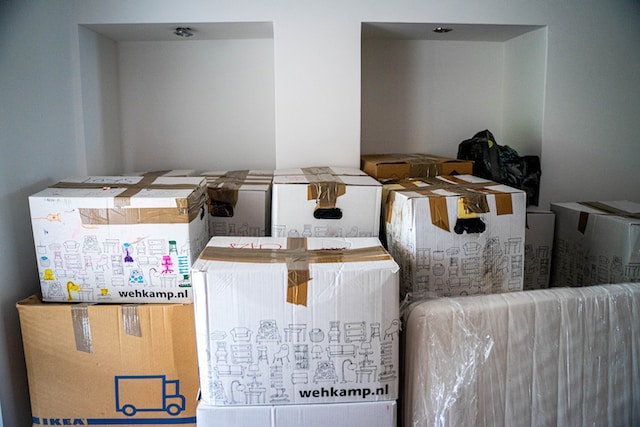
05 Nov The Ultimate Guide: How to Move Office Furniture
Moving office furniture can be a daunting task, but with the right plan and some helpful tips, you can make the process smoother and more manageable. Whether you’re relocating your office, rearranging your workspace, or just need to move a few pieces of furniture, this comprehensive guide will provide you with the information and strategies you need to get the job done efficiently and safely.
Planning Your Office Furniture Move
1. Assess Your Furniture
Before you start moving any furniture, take a close look at what you have. Identify the items you need to move, their size, weight, and any special considerations. Create a list or inventory to keep track of everything. This initial step will help you plan and organize the move effectively. Some offices like Worki manages the whole moving process including the plan.
2. Create a Moving Plan

Having a well-thought-out plan is crucial for a successful office furniture move. Consider factors such as the layout of your new office space, the path from your current location to the new one, and the timeline for the move. Allocate specific tasks to individuals or teams if you’re working in a group. This will help ensure that everyone knows their responsibilities.
3. Measure Doorways and Hallways
One of the most common challenges during office furniture moves is navigating through doorways and hallways. Measure the dimensions of these spaces and compare them to the size of your furniture. This will help you determine if you need to disassemble any items or find alternative routes to avoid potential obstacles.
Preparing Your Office Furniture
1. Disassemble When Necessary
Some office furniture, such as desks and cubicles, may need to be disassembled before moving. Carefully follow the manufacturer’s instructions for disassembly and keep track of all screws, bolts, and parts. Label or group them for easy reassembly at your new location.
2. Protect Furniture and Floors
To prevent scratches and damage to your furniture and office floors, use protective materials like moving blankets, furniture pads, or bubble wrap. Place these materials between the furniture items and make sure the corners and edges are well-covered. For floors, consider using floor runners to minimize the risk of scuffs and scratches.
3. Safely Wrap and Secure Fragile Items

For fragile items like glass tabletops or electronic equipment, use proper packing materials and wrap them securely. Bubble wrap, foam padding, and corrugated cardboard can provide protection against impacts and vibrations during transit. Secure these items with strong tape to ensure they stay in place.
Organizing the Move
1. Gather the Right Tools
Having the appropriate tools on hand is essential for a smooth office furniture move. Some of the basic tools you might need include a dolly, hand truck, moving straps, screwdrivers, and a socket set for reassembling furniture. Make sure these tools are in good working condition before you start the move.
2. Label Everything
Proper labeling is crucial for an organized move. Use color-coded labels or markers to identify furniture pieces and their respective locations in your new office. This will make it easier to place items in the right spots quickly, saving time and reducing confusion.
3. Protect Fragile Items During Transit
When transporting delicate office items, such as computer monitors or glass furniture, take extra precautions. Use custom crates or special packaging designed for fragile items. These added layers of protection will help minimize the risk of damage during transit.
Moving Your Office Furniture

1. Teamwork Makes the Dream Work
Moving office furniture is often a team effort. Enlist the help of coworkers, friends, or professional movers if necessary. Teamwork can make the process smoother and more efficient, especially when dealing with heavy or bulky items.
2. Use Proper Lifting Techniques
When lifting heavy office furniture, always use proper lifting techniques to avoid strain or injury. Bend at your knees and hips, keep your back straight, and lift with your legs. If the item is too heavy, don’t hesitate to ask for assistance.
3. Secure Furniture in the Moving Vehicle
When loading your furniture into a moving truck or van, secure it properly to prevent shifting during transit. Use straps, ropes, or bungee cords to keep items in place. Distribute the weight evenly to maintain balance and stability during the drive.
Unloading and Setting Up

1. Follow Your Floor Plan
Refer to the floor plan you created in the planning stage to guide the placement of your office furniture in the new space. Ensure that each item is positioned in its designated spot, maintaining the functionality and aesthetic of your office.
2. Reassemble Furniture
If you disassemble any furniture during the move, reassemble it following the manufacturer’s instructions. Make sure all parts and hardware are accounted for, and double-check that everything is properly aligned and secured.
3. Test and Adjust
Once your office furniture is in place, take the time to test all electronic equipment and furniture functionality. This includes checking that power outlets, cables, and connections are in working order. Make any necessary adjustments or corrections to ensure everything is operational.
Conclusion
Moving office furniture may seem like a daunting task, but with careful planning, organization, and the right tools, it can be a manageable process. By assessing your furniture, creating a moving plan, preparing your furniture, and following best practices for lifting and securing items, you can ensure a successful office furniture move. Remember to use proper techniques, protect fragile items, and enlist the help of a team to make the process smoother. With these tips, you’ll be well-prepared to move your office furniture efficiently and safely, allowing you to get back to work in your new space with minimal stress and downtime.


No Comments